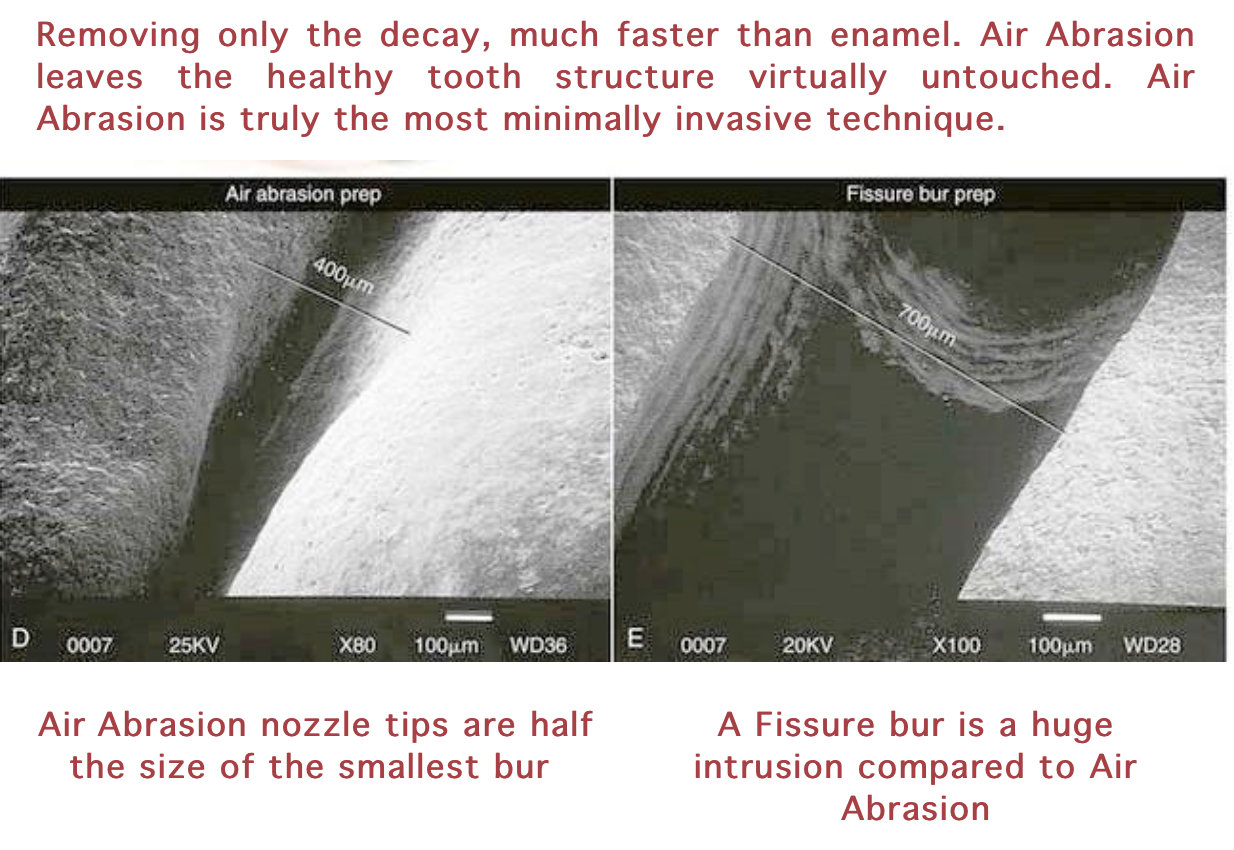TBU # 039: Be Conservative And Increase Your Bond Strengths With Air Abrasion
Feb 18, 2023
Biomimetic dentistry is based on a collection of research articles. We always say that there are numerous articles to support whatever treatment step that is in question. Biomimetics is really a group effort of steps. If we isolate one step, we'd have an improvement, but we wouldn't be reaching the full potential of biomimetics. If we're trying to get the most bond potential possible, we should definitely be using air abrasion. Air abrasion is one of those key steps in the treatment sequence.
Air abrasion allows us to be minimal and conservative. Its really good at only removing the damaged or decayed area. It essentially removes whatever is bad and bounces off what ever is good.

When air abrasion was invented within dentistry, it was at the time when metals were being used and composite wasn't invented yet. It basically wasn't relevant as thats not how the materials worked. Metals in dentistry require sharp and smooth lines, tight corners, etc. Adhesive dentistry is the exact opposite. We like rounded, selected areas that can be pinpointed to only damaged portions of the tooth. Air abrasion works to create more surface area so that the adhesive can create more tags in the dentin. Its leaving the tooth surface in a much better quality to use.


Here's how I do my preps.
When I'm cleaning out the decay, I'll typically stop using the bur and hand-piece once there is a little bit of decay left on the floor of the tooth. This is so I can remove the last little bit with my air abrasion unit. I'll typically do a few rounds of caries dye and air abrasion to ensure that its all clean and I'm leaving the floor the way that I want. This method will help preserve the maximum amount of tooth structure while getting it as clean as possible.
Once all the way clean, we are in a good spot to start the bonding. Air abrasion also gives and increase bond strength to basically any restorative material to both enamel and dentin. I'll use air abrasion before I restore with composite or glass ionomer.
This is an easy step that literally takes 10-15 seconds. It has an expensive price tag to start with but it makes the quality of our work better and ultimately saving time in the long run.
Whenever you're ready, here are the ways I can help you:
- If you're looking for better application in your practice, take a look at our online courses and guides
- The Foundations Of Biomimetic Dentistry
- How To Do Biomimetic Posterior Direct Composites.
- Get our 53 page biomimetic protocols guide for posterior direct restorations.
- Join our ever growing community and get instant access to our group chat, shared resources, on-demand help, along with networking with the leaders in biomimetics.
- Work with me 1:1 to grow your biomimetic dental practice.



